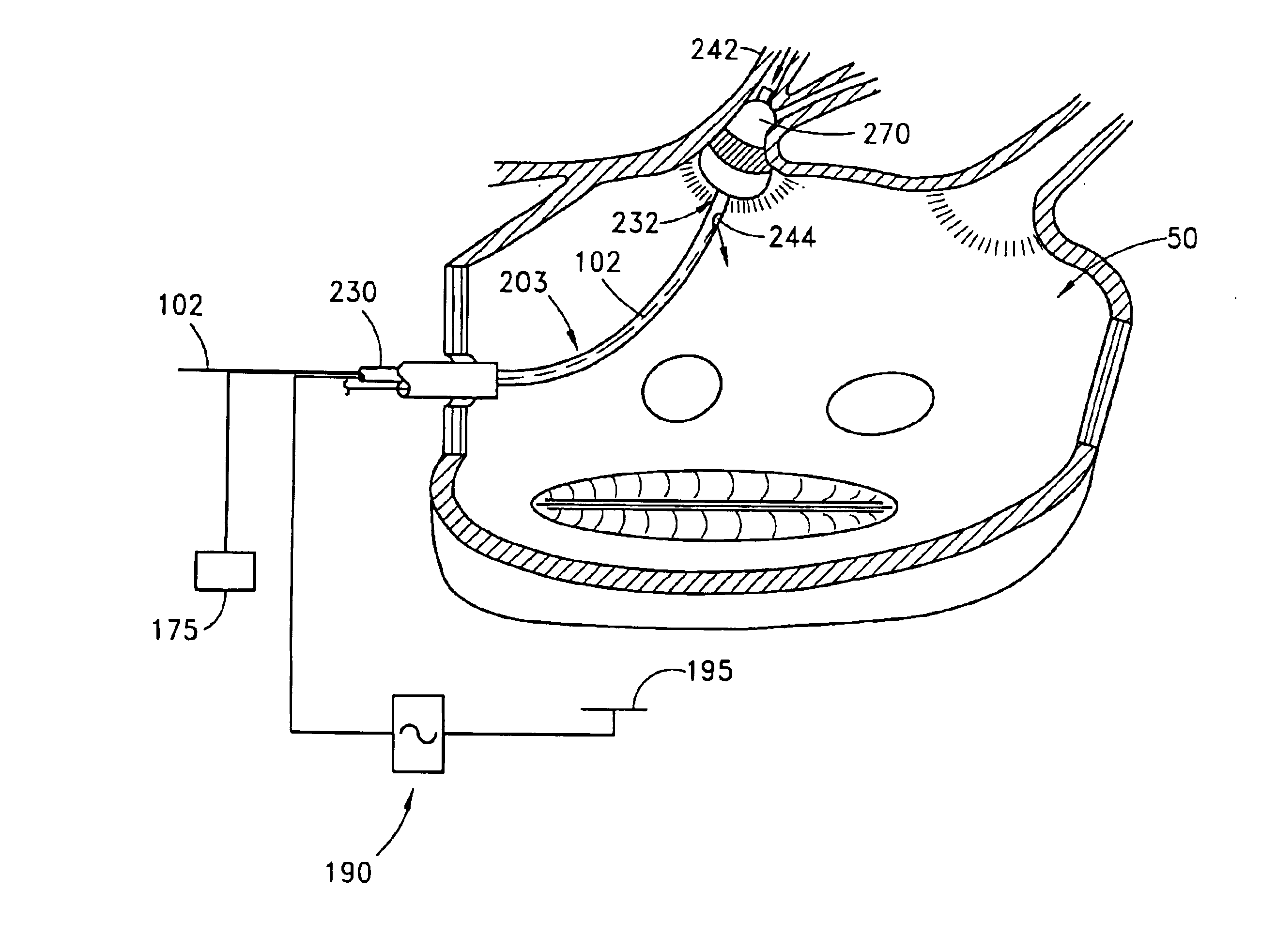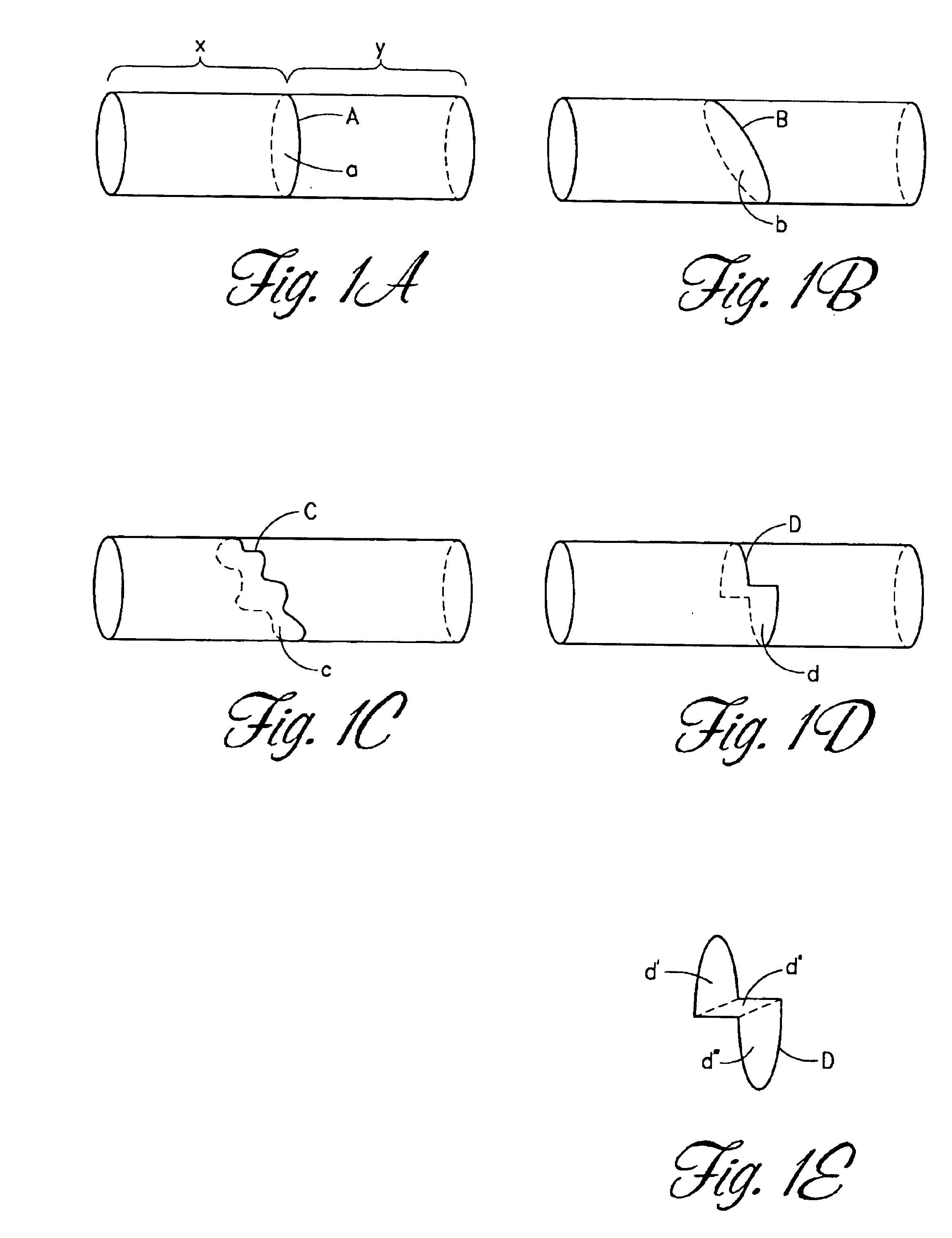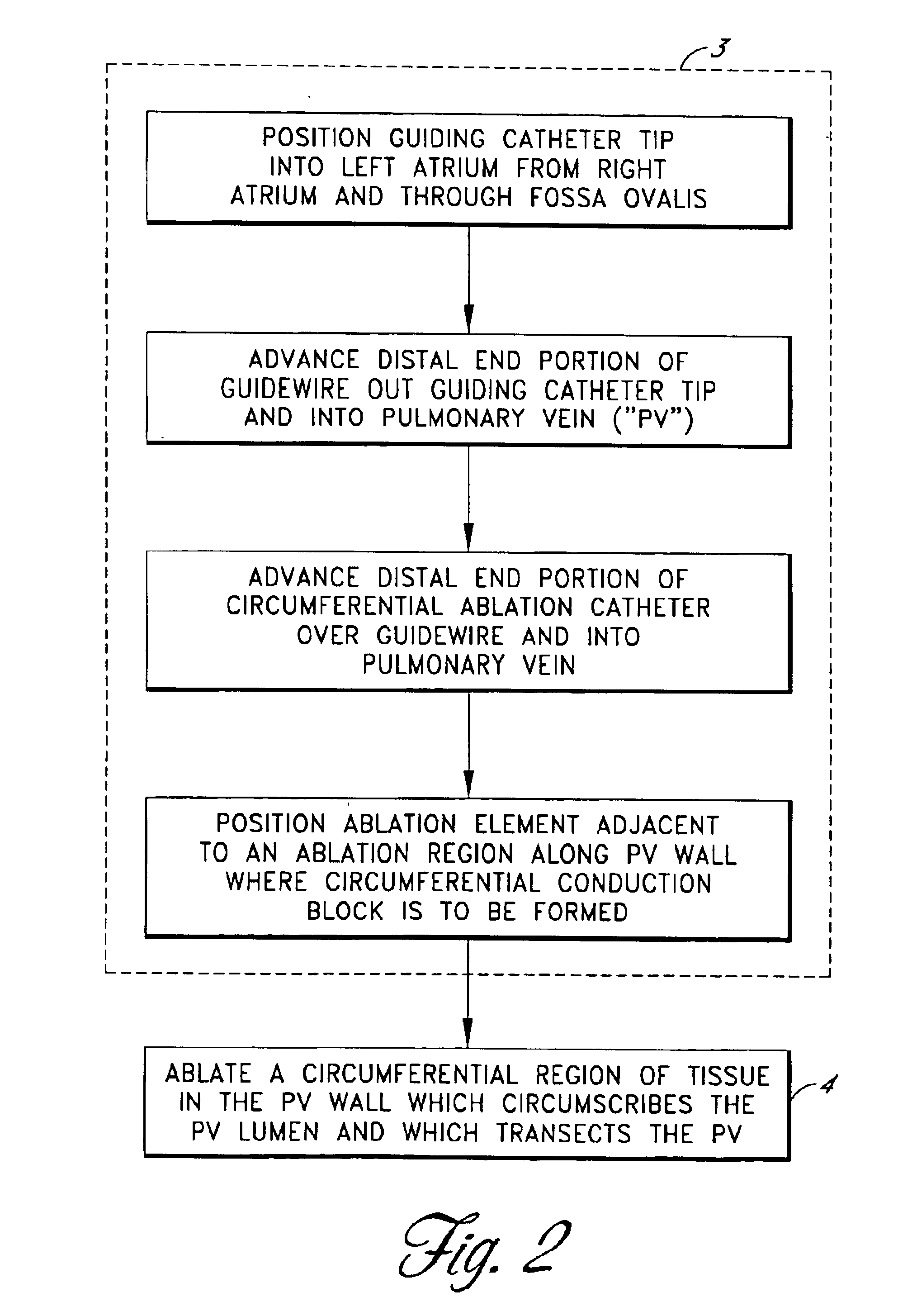Circumferential ablation device assembly
a circumferential ablation and device technology, applied in the field of surgical devices, can solve the problems of cardiac arrhythmias, general belief that they are entirely effective, and abnormal wall conditions, and achieve the effect of preventing atrial arrhythmias and high-invasive methods
- Summary
- Abstract
- Description
- Claims
- Application Information
AI Technical Summary
Benefits of technology
Problems solved by technology
Method used
Image
Examples
Embodiment Construction
As will be described with reference to the detailed embodiments below, the present invention is a circumferential ablation device assembly which is adapted to treat patients with atrial arrhythmia by forming a circumferential conduction block in a pulmonary vein which blocks electrical conduction along the longitudinal axis of the pulmonary vein wall and into the left atrium.
The terms “circumference” or “circumferential”, including derivatives thereof, are herein intended to mean a continuous path or line which forms an outer border or perimeter that surrounds and thereby defines an enclosed region of space. Such a continuous path starts at one location along the outer border or perimeter, and translates along the outer border or perimeter until it is completed at the original starting location to enclose the defined region of space. The related term “circumscribe,” including derivatives thereof, is herein intended to mean to enclose, surround, or encompass a defined region of space...
PUM
 Login to View More
Login to View More Abstract
Description
Claims
Application Information
 Login to View More
Login to View More - R&D
- Intellectual Property
- Life Sciences
- Materials
- Tech Scout
- Unparalleled Data Quality
- Higher Quality Content
- 60% Fewer Hallucinations
Browse by: Latest US Patents, China's latest patents, Technical Efficacy Thesaurus, Application Domain, Technology Topic, Popular Technical Reports.
© 2025 PatSnap. All rights reserved.Legal|Privacy policy|Modern Slavery Act Transparency Statement|Sitemap|About US| Contact US: help@patsnap.com



